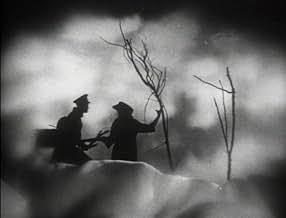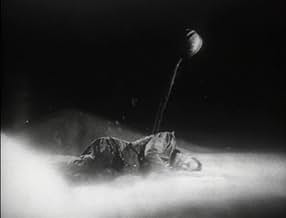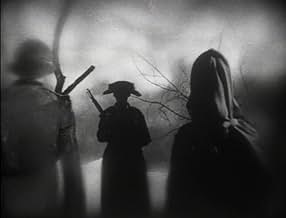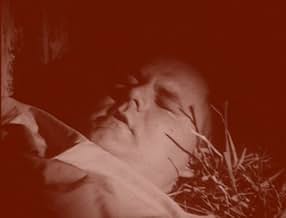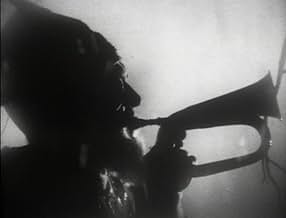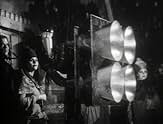IMDb रेटिंग
6.3/10
1.8 हज़ार
आपकी रेटिंग
अपनी भाषा में प्लॉट जोड़ेंAn amnesiac soldier, seeking his lost love, arrives in Archangel in northern Russia to help the townsfolk in their fight against the Bolsheviks, all quite unaware that the Great War ended th... सभी पढ़ेंAn amnesiac soldier, seeking his lost love, arrives in Archangel in northern Russia to help the townsfolk in their fight against the Bolsheviks, all quite unaware that the Great War ended three months ago.An amnesiac soldier, seeking his lost love, arrives in Archangel in northern Russia to help the townsfolk in their fight against the Bolsheviks, all quite unaware that the Great War ended three months ago.
- निर्देशक
- लेखक
- स्टार
- पुरस्कार
- कुल 1 जीत
Stephen Snyder
- Stage Kaiser Wilhelm II
- (as Snyder)
Graham Bicq
- Baby
- (as Graham Blicq)
फ़ीचर्ड समीक्षाएं
But seriously, you have films being made out there that are budgeting around $500,000,000 and then there are films like this; not even nominated for any major motion-picture awards? In my world, this is an Academy Award winner for best picture // and it only cost 50,000 Canadian Dollars! ARCHANGEL, at first, was a slippery slope, but somehow elevated to a nice, flat plain of gorgeousness.
We have a typical Guy Maddin story (B/W) based in 1919 about an amnesiac soldier named John Boles (no big names in this film) who sets out to find his true love, Iris, in Archangel, Russia where the Great War has already ended three months prior, but they have not received word about it yet. Obviously, the whole thing can be looked at as a gag; people wasting their time, dying (perhaps) when they shouldn't be. A lot of elements stuck out to me during this story that makes me believe that YOU CAN WATCH THIS FILM A MILLION TIMES AND NEVER, EVER, EVER, EVER GET BORED.
Let us start right off the bat and mention that this film was VERY EISENSTEIN- ESQUE. Definitely not a bad thing; we all love IVAN THE TERRIBLE, but for some amount of individuals, it is just not their cup of cameo-mocha tea. The things I find similar are the CINEMATOGRAPHY; very old fashioned just as Eisenstein had it in the 40s and 50s // then there is the SET DESIGN, which is the biggest in my opinion, because, as complex as the movie may seem, it was such a simple development and everything (costumes and all) ran smoothly (nothing seems too quirky or fake). He really gave a sense of direction regardless of how amateur the locations seem.
**Speaking of Eisenstein's Ivan the Terrible: Part II, ARCHANGEL used a similar effect towards the end to give the audience a sense of direction from one place to another; one, red tint // one, blue tint. Very beautiful.
I rated Guy Maddin's Twilight Nymphs (pretty low, in fact) and couldn't help but feel betrayed by him. Now after seeing this project, I want to RE-WATCH that film until I can find the greatness in it. THE MADDINESS!! if you will..
***But like other Maddin films, this one has the same style of dialogue. That means, unnecessary laughs and confusion all around the audience. BUT I LOVE IT. Like I said, this movie you can see numerous times and always get a different out-look on it. Some things you might take to heart, but others you might find are actually part of the story and fit very well // however quirky or surreal they may seem. My favorite line comes from Iris's second lover, Philbin, when he says:
+ PHILBIN: I believe there is a reason for everything. For instance, someone shaved my mustache while I slept last night. What could that mean? +
I think this film is very easy to understand, even for a baby.. okay, maybe not really, but some might thinks there's too much going on. BE PATIENT, the story will come to you. Besides, there is written text shown to update you every once in a while of what it happening in the scenes.
*****There is a scene with someones intestines that I REALLY want to bring up, but I do not want to contain any spoilers in my reviews. **If you watch this film or have already embarked upon it, then you will know what I am talking about; Hehe.
I hereby rate thee film a 10 OUT OF 10!!! I know, many will concur, but film for me is a serious art form. While some things out their are being made with no effort, money wasted, and DREAMS CRUSHED.. it is works like this that can really make you take a second and actually appreciate LOVE, FRIENDSHIP, POSSESSIONS, or even COURAGE/BRAVEY; claiming your part in the world. And I got all of that from Guy Maddin's Archangel. - Heart-on!
-- Michael Mendez
We have a typical Guy Maddin story (B/W) based in 1919 about an amnesiac soldier named John Boles (no big names in this film) who sets out to find his true love, Iris, in Archangel, Russia where the Great War has already ended three months prior, but they have not received word about it yet. Obviously, the whole thing can be looked at as a gag; people wasting their time, dying (perhaps) when they shouldn't be. A lot of elements stuck out to me during this story that makes me believe that YOU CAN WATCH THIS FILM A MILLION TIMES AND NEVER, EVER, EVER, EVER GET BORED.
Let us start right off the bat and mention that this film was VERY EISENSTEIN- ESQUE. Definitely not a bad thing; we all love IVAN THE TERRIBLE, but for some amount of individuals, it is just not their cup of cameo-mocha tea. The things I find similar are the CINEMATOGRAPHY; very old fashioned just as Eisenstein had it in the 40s and 50s // then there is the SET DESIGN, which is the biggest in my opinion, because, as complex as the movie may seem, it was such a simple development and everything (costumes and all) ran smoothly (nothing seems too quirky or fake). He really gave a sense of direction regardless of how amateur the locations seem.
**Speaking of Eisenstein's Ivan the Terrible: Part II, ARCHANGEL used a similar effect towards the end to give the audience a sense of direction from one place to another; one, red tint // one, blue tint. Very beautiful.
I rated Guy Maddin's Twilight Nymphs (pretty low, in fact) and couldn't help but feel betrayed by him. Now after seeing this project, I want to RE-WATCH that film until I can find the greatness in it. THE MADDINESS!! if you will..
***But like other Maddin films, this one has the same style of dialogue. That means, unnecessary laughs and confusion all around the audience. BUT I LOVE IT. Like I said, this movie you can see numerous times and always get a different out-look on it. Some things you might take to heart, but others you might find are actually part of the story and fit very well // however quirky or surreal they may seem. My favorite line comes from Iris's second lover, Philbin, when he says:
+ PHILBIN: I believe there is a reason for everything. For instance, someone shaved my mustache while I slept last night. What could that mean? +
I think this film is very easy to understand, even for a baby.. okay, maybe not really, but some might thinks there's too much going on. BE PATIENT, the story will come to you. Besides, there is written text shown to update you every once in a while of what it happening in the scenes.
*****There is a scene with someones intestines that I REALLY want to bring up, but I do not want to contain any spoilers in my reviews. **If you watch this film or have already embarked upon it, then you will know what I am talking about; Hehe.
I hereby rate thee film a 10 OUT OF 10!!! I know, many will concur, but film for me is a serious art form. While some things out their are being made with no effort, money wasted, and DREAMS CRUSHED.. it is works like this that can really make you take a second and actually appreciate LOVE, FRIENDSHIP, POSSESSIONS, or even COURAGE/BRAVEY; claiming your part in the world. And I got all of that from Guy Maddin's Archangel. - Heart-on!
-- Michael Mendez
I only know a few of Maddin's projects. This seems to be the earliest available.
I'm really beginning a deep appreciation of this man's visual soul. While this project didn't change my life, it demonstrated the power to do so, like a strutting policeman among weak minds.
What I like about his mind is how he seats the thing first in the soul, then in the cinematic vocabulary instead of the usual path which values character, motivations, narrative clarity. What he's done here is revisit Eisenstein. I don't suppose many filmgoers have much truck for a Russian silent filmmaker who was primarily occupied in Soviet propaganda. He developed some important ideas about how a scene (never a movie only a scene) can be constructed from visual fragments what it means to "see."
His particular solutions aren't popular today, and the whole idea of slicing the eye has been appropriated to the service of now-conventional values of storytelling and the cult of celebrity some few jokes and even fewer emotions destinations.
Eisenstein's idea is based on the notion of readable cells of retinal comprehension, more or less of the same size which when combined give an impression. The more discrete the components in presentation the more comprehensible the assembly, what he called the collage.
What Maddin does here is make a metaEisenstein. The story is set in Russia and populated by international warriors, all of whom have only a groggy notion of why they are there. Our hero, like Maddin, is Canadian. It is essentially a silent movie. There is a parallel movie that is a talkie, into which this silent, main piece is embedded.
Within the silent movie is a sort of "movie within," exactly as abstract from the silent portion as the silent portion is to the talkie portion and thence not to our world (as is the usual case with folding) but to the world of normal movies.
That "movie within" is the "illumination" a set of stage tableaux depicting famous battles. If you experience nothing but these or rather if you skate over all the surrounding context and focus only on these you will be rewarded. There's so much reference there.
The overall theme of the thing is the hard boundary of memory, where the continuity of knowing begins and ends. In the story, this exhibits as amnesia plus a sort of quantum identity shifts of women, who else? That's good, its valuable. But the interesting thing is how this is seated in the collage itself. Eisenstein's idea is that each cell, each image, of the collage needs to have some reference to the others. The art is in the nature of that reference.
Maddin makes that reference sit on the cells. In his case they are not bubbles in transparent foam that light can shine through. Instead they are stones, smooth stones with hard impenetrable skins that only know themselves and keep forgetting those they are nestled against. So they forget who they are.
Ted's Evaluation -- 3 of 3: Worth watching.
I'm really beginning a deep appreciation of this man's visual soul. While this project didn't change my life, it demonstrated the power to do so, like a strutting policeman among weak minds.
What I like about his mind is how he seats the thing first in the soul, then in the cinematic vocabulary instead of the usual path which values character, motivations, narrative clarity. What he's done here is revisit Eisenstein. I don't suppose many filmgoers have much truck for a Russian silent filmmaker who was primarily occupied in Soviet propaganda. He developed some important ideas about how a scene (never a movie only a scene) can be constructed from visual fragments what it means to "see."
His particular solutions aren't popular today, and the whole idea of slicing the eye has been appropriated to the service of now-conventional values of storytelling and the cult of celebrity some few jokes and even fewer emotions destinations.
Eisenstein's idea is based on the notion of readable cells of retinal comprehension, more or less of the same size which when combined give an impression. The more discrete the components in presentation the more comprehensible the assembly, what he called the collage.
What Maddin does here is make a metaEisenstein. The story is set in Russia and populated by international warriors, all of whom have only a groggy notion of why they are there. Our hero, like Maddin, is Canadian. It is essentially a silent movie. There is a parallel movie that is a talkie, into which this silent, main piece is embedded.
Within the silent movie is a sort of "movie within," exactly as abstract from the silent portion as the silent portion is to the talkie portion and thence not to our world (as is the usual case with folding) but to the world of normal movies.
That "movie within" is the "illumination" a set of stage tableaux depicting famous battles. If you experience nothing but these or rather if you skate over all the surrounding context and focus only on these you will be rewarded. There's so much reference there.
The overall theme of the thing is the hard boundary of memory, where the continuity of knowing begins and ends. In the story, this exhibits as amnesia plus a sort of quantum identity shifts of women, who else? That's good, its valuable. But the interesting thing is how this is seated in the collage itself. Eisenstein's idea is that each cell, each image, of the collage needs to have some reference to the others. The art is in the nature of that reference.
Maddin makes that reference sit on the cells. In his case they are not bubbles in transparent foam that light can shine through. Instead they are stones, smooth stones with hard impenetrable skins that only know themselves and keep forgetting those they are nestled against. So they forget who they are.
Ted's Evaluation -- 3 of 3: Worth watching.
This wierd, dreamlike film goes a long way on a limited budget, creating a completely unreal experience about a real historical event in Archangel, Russia during the Russian revolution.
Like all of Maddin's other films, Boles is and anti-hero, his subversive obsession with Veronika could not be interpreted as love or heroic, a brillliant deconstruction of your average war movie.
The ending is a bit disappointing (out of the brooding character with the rest of the film) but in all a great film.
Like all of Maddin's other films, Boles is and anti-hero, his subversive obsession with Veronika could not be interpreted as love or heroic, a brillliant deconstruction of your average war movie.
The ending is a bit disappointing (out of the brooding character with the rest of the film) but in all a great film.
It's not worth really pointing to one particular performance or even the music (which is eerie and sublime all at once) even though everything needed to come together to make this as absorbing as it is. What Archangel has above all else in Guy Maddin's vision and concepts, somewhat like David Lynch's Eraserhead before it and not many other films since, is the singularity and commitment to placing you directly into a world that you know is not realistic, but that is the point after all. You are in the hands of someone who is showing you artifice and you know these people are often in rooms or in a warehouse somewhere in Canada, and (not but, and) it's is an epic of despair.
This is a capital D Deam of silent and experimental/avant-garde cinema, and excavation practically of a dream in a sense, and a dream-cum-nightmare of war, and it looks at the world of Patriarchy (from male romantic dominance to how someone disciplines a child. There is also such glorious absurdity and as soon as those folks packed into that small house on the outskirts of Russia tend to that child who just had a stroke for some reason (!) With careful and gentle horse brushes all over his body (!!), you know this is something you have to take on its crazy terms.
But then again war is crazy, and the people who create Boogeymen out of the likes of the Bolsheviks - big monster men with big ears and big claws, after all, and can only be taken out after a coward uses his expunged intestines to strangle the brutes - should be mocked. Like in a Dream, or a nightmare, or a mix of light and dark together (like an Avant-Garde cup of coffee), it is not something that you piece together logically but by how it is based in spme unidentified place in time with a protagonist who is losing his grip on his own constructed reality (if it was there at all).
Archangel is unique also as both romantic and ironic storytelling at the same time, and it is an incredibly tricky prospect for Maddin to balance both tones but he kind of gets there, and I don't mean just that with Boles and the woman named Veronika who he says/demands/confusingly misremembers is Iris; the shots where characters get on horses or carriages, which you know was done in a room with like fake snow being blasted at someone's face and a rocking from side to side on a low grade rig, it speaks to something we love about how tactile the movies can be and how they conjure such visions that can *only* be done on film. This also goes to moments and shots where it is those two actors sharing the frame or looking at one another (sometimes with memories intact and sometimes... not).
Is some of the dubbing sketchy? Actually, not as much as you'd think (or now that I told you the movie is dubbed with dialog it already has an uphill battle, right), and because of the milky and smoky black and white atmosphere and the equally play-dress up and believablity Maddin has some breathing room to have his actors mouth to their movements and the artifice plays into it all. And are there moments or times when the pacing gets a little odd? Sure, it's an Expressionistic Canadian (post?! Kind of WW1 memory piece about memory loss and gruesome male dominated violence!
But it is so much fun and you can feel the heart and sweat put into it while none of it feels like it had so much effort as could have happened on a low/microbudget. There's madness and kindness and, again, rabbits and weird gooey blood, and it all works.
This is a capital D Deam of silent and experimental/avant-garde cinema, and excavation practically of a dream in a sense, and a dream-cum-nightmare of war, and it looks at the world of Patriarchy (from male romantic dominance to how someone disciplines a child. There is also such glorious absurdity and as soon as those folks packed into that small house on the outskirts of Russia tend to that child who just had a stroke for some reason (!) With careful and gentle horse brushes all over his body (!!), you know this is something you have to take on its crazy terms.
But then again war is crazy, and the people who create Boogeymen out of the likes of the Bolsheviks - big monster men with big ears and big claws, after all, and can only be taken out after a coward uses his expunged intestines to strangle the brutes - should be mocked. Like in a Dream, or a nightmare, or a mix of light and dark together (like an Avant-Garde cup of coffee), it is not something that you piece together logically but by how it is based in spme unidentified place in time with a protagonist who is losing his grip on his own constructed reality (if it was there at all).
Archangel is unique also as both romantic and ironic storytelling at the same time, and it is an incredibly tricky prospect for Maddin to balance both tones but he kind of gets there, and I don't mean just that with Boles and the woman named Veronika who he says/demands/confusingly misremembers is Iris; the shots where characters get on horses or carriages, which you know was done in a room with like fake snow being blasted at someone's face and a rocking from side to side on a low grade rig, it speaks to something we love about how tactile the movies can be and how they conjure such visions that can *only* be done on film. This also goes to moments and shots where it is those two actors sharing the frame or looking at one another (sometimes with memories intact and sometimes... not).
Is some of the dubbing sketchy? Actually, not as much as you'd think (or now that I told you the movie is dubbed with dialog it already has an uphill battle, right), and because of the milky and smoky black and white atmosphere and the equally play-dress up and believablity Maddin has some breathing room to have his actors mouth to their movements and the artifice plays into it all. And are there moments or times when the pacing gets a little odd? Sure, it's an Expressionistic Canadian (post?! Kind of WW1 memory piece about memory loss and gruesome male dominated violence!
But it is so much fun and you can feel the heart and sweat put into it while none of it feels like it had so much effort as could have happened on a low/microbudget. There's madness and kindness and, again, rabbits and weird gooey blood, and it all works.
The idea that one made a silent-era looking feature in the early 90s didn't sound as compelling to me, on account that I hear all kinds of crazy ideas all the time and that I'm very familiar with the David Lynch universe; but the fact that the person who came up with the idea would also execute it with such authenticity (to the point that aliens knowing nothing of human chronology would list "Archangel" among Pudovkin's "Mother" and Dreyer's "Joan of Ark"!), makes it for one of the most hardcore comedies I've ever seen. Most people wouldn't laugh, this is an inside joke, for either comedians, or people with great sense of humor, or people of the film industry to pick up. After 15 minutes in, I stopped caring about the "idea" behind it, and a sentence kept coming inside my head every next scene, making me either smirk or laugh: "The Balls!.. The Balls!..", meaning: ".. the audacity to troll the world like that!"; the same kind of feeling I had while reading Joyce's "Ulysses"!.. I understood little of the plot, since, suffering from the critic's malady, as I've confessed before, I was, in vain, trying to draw parallels between the movie I was watching and movies from the silent era. I just got that there is an amnesiac soldier in post-great-war's Russia, obsessed with a girl who is in love with some other amnesiac soldier! At some point, an accident turns her into an amnesiac as well. Each technique helps us get into this confused trio's chaotic psychology; the highly saturated black&white photography (to the point there are no greys), the use of sound and silence, the abrupt transitions tactlessly switching the previous scene's tone (a cacophony very common in even the most masterfully edited classics of the silent era), the blurs in our frames' corners, as if caused by humidity, or, at times, as if some heavy snowflakes have landed over the lens; well, life is a confusing bitch for even the sanest among us, let alone for amnesiacs who have to battle against the Bolsheviks right after they battled against the Germans! Life is a confusing bitch, why would we demand from art to make sense?.. Fellini wondered once. What makes "Archangel" more than just a troll picture is the consistency of Maddin and his collaborators to accomplish this look, and create an experience that overstuffed viewers, like me, can say is unlike anything they've seen before.
क्या आपको पता है
- ट्रिवियाThe interiors of the hotel where Philbin and Veronkha stay were in fact the director's apartment, redressed and with an elaborate new paint job.
- कनेक्शनFeatured in Guy Maddin: Waiting for Twilight (1997)
टॉप पसंद
रेटिंग देने के लिए साइन-इन करें और वैयक्तिकृत सुझावों के लिए वॉचलिस्ट करें
- How long is Archangel?Alexa द्वारा संचालित
विवरण
बॉक्स ऑफ़िस
- बजट
- CA$5,00,000(अनुमानित)
- चलने की अवधि1 घंटा 18 मिनट
- रंग
- ध्वनि मिश्रण
- पक्ष अनुपात
- 1.33 : 1
इस पेज में योगदान दें
किसी बदलाव का सुझाव दें या अनुपलब्ध कॉन्टेंट जोड़ें


